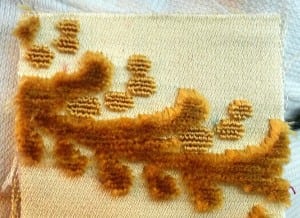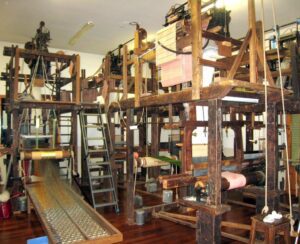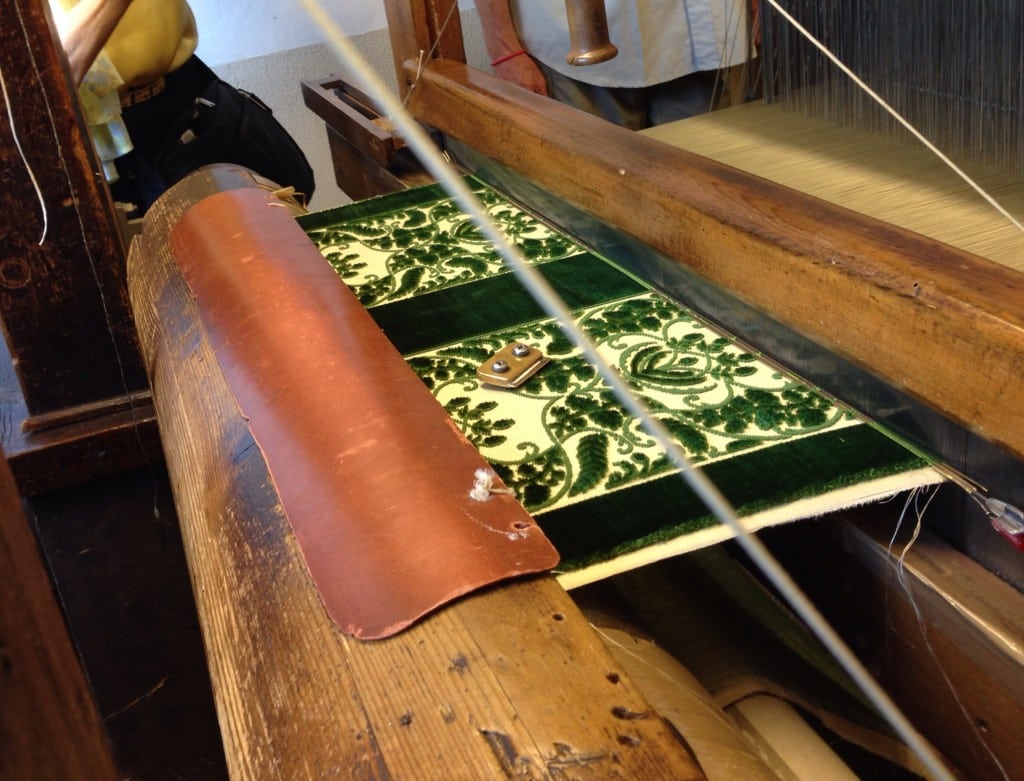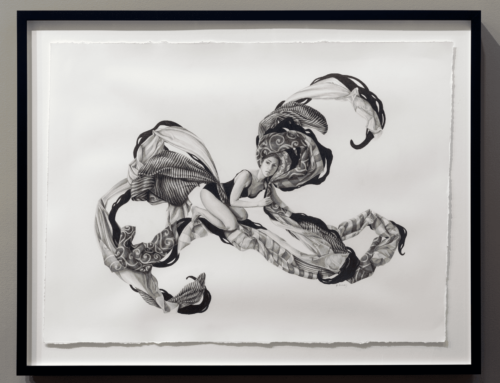 [gdlr_image_link type=”image” image_url=”” link_url=”” alt=”” target=”_blank”]Italy. Velvet curtains frame the stage, and are the shawl of royalty. The touch that is inviting and the play of light on the complicated piles and loops of threads add to its sensuality and esteem.
[gdlr_image_link type=”image” image_url=”” link_url=”” alt=”” target=”_blank”]Italy. Velvet curtains frame the stage, and are the shawl of royalty. The touch that is inviting and the play of light on the complicated piles and loops of threads add to its sensuality and esteem.
The word ‘velvet’ itself is rich, as the fabric. Historians believe velvet weaving began in Baghdad, as in ancient Mesopotamia, before moving west to Egypt. Egypt was at one time the velvet capital of the world. China is also credited with practicing the art of the weave as early as the 13th century, because the earth is round and ideas too rotate.

18th century velvet loom in Italy
The peculiar art of the loom then found a sanctuary in Italy where it flourished and spread throughout Europe and is nearly a symbol of the Renaissance. Today, industrial looms make a ‘silk velvet’ that is actually a rayon blend, though this does not diminish the cost. We are all better acquainted with the imitation sheen of ‘velveteen’ which is more common in upholstery, and that memorable children’s tale, The Velveteen Rabbit. The complicated hand loom process of making velvet elevated its scarcity and value.
We came across this video on Facebook about a remnant of one Italian family who continues to make velvet using 18th-century looms, keeping the weave as part of their family’s ‘coat of arms.’ We had to share this Great Big Story video on Velvet.
The video introduces us to the Bevilacqua family (who are also on Facebook), noted as the last of the Italian vintage velvet weavers. Listen to the delightful video on the sound of the loom.







Leave A Comment
You must be logged in to post a comment.